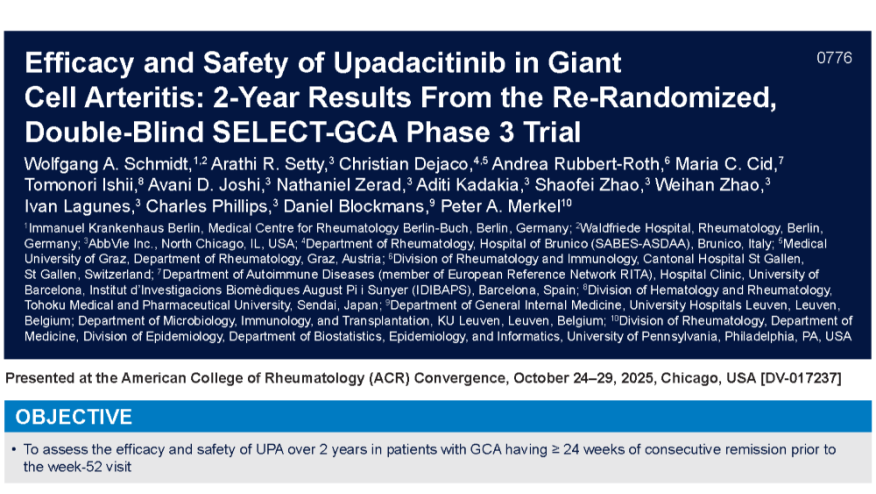CV Risks Raised in Myopathies Save

Patients with the idiopathic inflammatory myopathies (IIMs) dermatomyositis and polymyositis are at increased risk for cardiovascular events, with risks similar to what has been documented for rheumatoid arthritis (RA), during the first 5 years after diagnosis, U.K. researchers reported.
Compared with healthy controls, significantly greater risks for all cardiovascular events after adjustment for age and sex were seen for the IIMs, with a hazard ratio of 1.47 (95% CI 1.18-1.83), and RA, with a hazard ratio of 1.36 (95% CI 1.22-1.52), according to Cristina Párraga Prieto, MD, of King's College London, and colleagues.
But unlike in RA, the risk declined after 5 years to that seen in the general population, the researchers reported in their study online in Clinical Rheumatology.
While it's well recognized that certain inflammatory and autoimmune diseases are associated with accelerated atherosclerosis and cardiovascular disease, the risk appears to differ according to the specific disease. For example, the risk is estimated to be even higher for systemic lupus erythematosus than for RA.
Certain characteristics of the IIMs have similarities to lupus, such as elevated type I interferon levels and an interferon-α gene signature. Previous research has suggested that interferon may be involved in the early atherosclerosis characteristic of systemic lupus erythematosus.
Few data are available on the risks associated with dermatomyositis and polymyositis, however, so Prieto and colleagues analyzed data from the U.K. Clinical Practice Research Datalink, which is representative of the overall nationwide population.
The outcomes of interest were myocardial infarction, acute coronary syndrome, unstable angina, and ischemic or hemorrhagic stroke. Patients with a history of these events were excluded.
The analysis included 603 IIM patients, 300 with dermatomyositis and 303 with polymyositis, 4,047 patients with RA, and 4,061 healthy controls.
Patients with IIM and RA were older, at 58 and 57 years, respectively, than controls, who averaged 52.
More patients with RA than with IIM or the controls were current smokers (36% vs 26% and 25%), while more IIM patients were hypertensive and used statins. Glucocorticoids were being used by 67% of the IIM group and by 52% of the RA group.
The rates of cardiovascular events were 2.9 and 2.7 per 100 patient-years in the IIM and RA groups, respectively, compared with 1.5 per 100 among controls, the investigators reported. After full adjustment not only for age and sex but also for cardiovascular risk factors, the hazard ratios for cardiovascular events were slightly attenuated but still significant compared with controls, at 1.38 (95% CI 1.11-1.72) for IIM and 1.26 (95% CI 1.12-1.41) for RA. This suggested, the team said, that the increased risk cannot be fully explained by traditional cardiovascular risk factors.
There was no significant difference in risk for IIM versus RA in the multivariate analysis.
For myocardial infarction specifically, fully adjusted hazard ratios were elevated compared with controls, at 1.61 (95% CI 1.27-2.04) for IIM and 1.36 (95% CI 1.19-1.54) for RA. No differences were seen for stroke.
When the researchers looked at risks over time, they found that for IIM patients, the elevated risk was seen only during the first 5 years (HR 1.32, 95% CI 0.90-1.95), declining to 0.74 (95% CI 0.32-1.69) during years 5 to 10 and to 1.03 (95% CI 0.57-1.84) during years 10 to 15.
In contrast, the hazard ratios among RA patients during those three time periods remained stable, at 1.22 (95% CI 0.91-1.65), 1.22 (95% CI 0.92-1.63), and 1.31 (95% CI 1.05-1.65), respectively.
The investigators noted that they excluded patients with other concurrent autoimmune diseases, despite the fact that IIM can coexist in patients with disorders such as lupus and systemic sclerosis. This may have led to fewer than expected patients being included in the analysis, which may have reduced the power of their study. "However, it also highlights the complexity of autoimmune diseases in their pathogenesis, with common factors in their etiology but different mechanisms of autoimmunity," the team wrote.
Further research, preferably in a large prospective population, will be needed to confirm the decrease in cardiovascular risk after 5 years among IIM patients "to ensure that the events early in the disease are atherosclerotic rather than inflammatory," the researchers concluded.
They also called for the development of guidelines on assessment and management of cardiovascular risks in IIM. "This would help reduce mortality in IIM which remains high, despite immunosuppressive treatment, with cardiovascular disease being a major cause of death," the investigators wrote.
A limitation of the study, they said, was the inclusion of U.K. patients only.
Disclosures
The study was supported by the Medical Research Council.
Clinical Rheumatology
Source Reference: Prieto CP, et al "Similar risk of cardiovascular events in idiopathic inflammatory myopathy and rheumatoid arthritis in the first 5 years after diagnosis" Clin Rheumatol 2020; DOI: 10.1007/s10067-020-05237-7.











If you are a health practitioner, you may Login/Register to comment.
Due to the nature of these comment forums, only health practitioners are allowed to comment at this time.